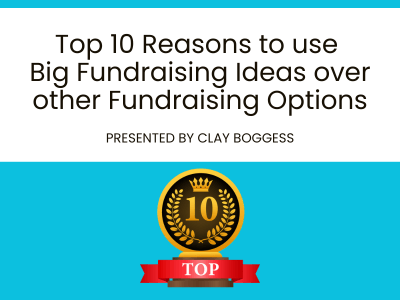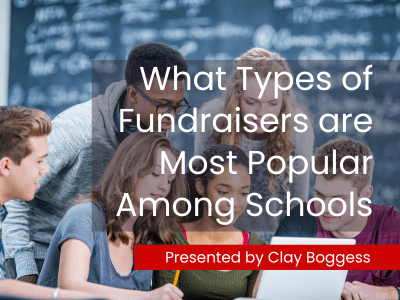
Alright, buckle up, fundraising champions! Let's ditch those deflated prize programs and inject some earnest enthusiasm into your school's fundraising efforts. You landed here at Big Fundraising Ideas because you're probably nodding your head in agreement with the title: Why Traditional Student Prize Programs Are Collecting Dust.
You're not alone. For years, schools have leaned on the sparkly allure of prize brochures, those glossy pamphlets promising kids everything from rainbow-colored erasers to a questionable quality stereo if they sell a mountain of candy bars. Remember those kickoff assemblies? The deafening cheers as students ogle the top-tier prizes? Ah, youthful optimism! It’s a beautiful thing.
We at Big Fundraising Ideas love fundraising. We believe in the power of community, the importance of school programs, and the incredible spirit of students when they’re genuinely motivated. But sometimes, tough love is needed. And the truth is relying solely on those old prize programs might hinder your fundraising success.
Is Your Prize Program Sparking Joy or Just Dust Bunnies?
Let's rewind to that kickoff assembly. Remember the wide eyes, the gasps of excitement, the dreams of walkie-talkies and glow-in-the-dark gizmos? For elementary students, it’s pure magic. They grab those prize brochures as they’ve just been handed the key to Fort Knox. They envision themselves swimming in a sea of fantastic prizes, just waiting to be earned.
But hold on a minute. Let's fast forward a week or two into the fundraiser. Reality starts to bite. Those glossy prize brochures suddenly look less appealing when your students (and their parents) realize how many boxes of cookies, wrapping paper rolls, or questionable scented candles they need to hawk to reach those “must-have” prizes.
The initial euphoria fades. The prize brochure ends up crumpled at the bottom of backpacks. And the fundraising enthusiasm? Let’s just say it’s deflating faster than a week-old birthday balloon.
The Prize Program Paradox: Initial Hype vs. Long-Term Discouragement
Here’s the core issue: prize programs often operate on a model of front-loaded excitement followed by back-end disappointment. The kickoff assembly is designed to create a frenzy, showcasing the most enticing, top-tier prizes. It’s a brilliant marketing tactic, no doubt! Kids leave, buzzing with anticipation.
However, the reality of the prize tiers quickly sets in. To maximize profits (and minimize prize quality), many fundraising companies load up the lower prize levels with less-than-thrilling items. Think plastic trinkets that break before you get them home, dollar store novelties with a fundraising price tag, and enough tiny erasers to supply a small nation.
This cheap prize dilemma leads to a vicious cycle:
- Initial Excitement, Quick Discouragement: The prize program kicks off with a bang, but excitement wanes as students face the selling reality.
- Low Participation: Discouraged students (and parents!) become less likely to participate, impacting overall sales.
- Disappointing Results: Lower sales mean less money raised for vital school programs – the very reason you’re fundraising in the first place!
Why Prize Programs Are Losing Their Luster: Unpacking the Disappointment
Let’s dissect the anatomy of a failing prize program. Here are the key culprits contributing to prize program fatigue and fundraising frustration:
Parent Prize Program Fatigue: “Not Another Student Packet!”
Oh, that familiar rustle of paper emerging from your child’s backpack. For many parents, the sight of a fundraising packet triggers a reaction between mild annoyance and outright dread. It’s not that parents are anti-fundraising; far from it! They understand the importance of supporting their kids’ schools. But they often tire of the same old prize programs, year after year.
Imagine the scenario: Your child comes home, eyes sparkling, waving a prize brochure like a winning lottery ticket. You, the parent, open it with a sigh of practiced resignation. “Oh, look, honey,” you say, with forced enthusiasm, “another chance to win a pencil topper shaped like a unicorn!”
Parents have been down this road before. They've seen the low-quality trinkets, the unrealistic selling goals, and the ultimate disappointment etched on their child’s face when they realize the ‘amazing’ prizes are just okay.
The Parent Perspective:
- Dollar Store Deja Vu: Parents know they can often buy similar (or even better) versions of the lower-tier prizes at the local dollar store for a fraction of the cost. Why bother selling countless items for something they could pick up on a quick errand?
- The Selling Burden: Let's be honest. Parents often end up doing a significant chunk of the selling. Repeatedly asking friends, family, and colleagues throughout the year for various school fundraisers can become tiring, especially when the incentive for them is questionable prizes for their kids.
- Guilt vs. Genuine Enthusiasm: Parents often participate out of obligation or guilt—they want to support the school. Still, the prize program doesn't spark genuine excitement or make the selling process enjoyable.
Older Student Apathy
Remember those kickoff assemblies we talked about? Guess who’s usually not caught up in the prize frenzy? That’s right – your older students. Middle schoolers and high schoolers have seen it all before. They’ve experienced the prize program cycle multiple times. The glitz and glamour of the kickoff no longer sway them.
Experience is a harsh teacher. Older students have learned from years of fundraising experience that:
- The Top Prizes are Elusive: They understand the sheer volume of selling required to reach the ‘good stuff’ and often deem it unrealistic or not worth the effort.
- Lower-tier prizes are Underwhelming. They’ve likely already accumulated drawers full of cheap, easily broken fundraising prizes from previous years. The novelty has worn off—big time.
- The “It’s for the School” Argument Only Goes So Far: While older students generally understand the importance of fundraising for their school, the disconnect between their effort and the personal reward can be demotivating.
The Older Student Mindset:
- Been There, Done That: They've simply outgrown the allure of traditional prize programs. The same old trinkets and gadgets hold little appeal.
- Time vs. Reward Calculation: Older students are more aware of the value of their time. They may feel their efforts could be better spent on other activities or earning money in different ways.
- Social Coolness Factor: Let's face it, selling door-to-door for cheap prizes might not be perceived as the ‘coolest’ activity for older students, potentially leading to social reluctance.
Prize Quality: From "Wow!" to "Womp, Womp…"
Ah, prize quality. The elephant in the fundraising assembly hall is the most significant and consistent complaint about traditional prize programs.
Let's be honest: Many of the lower-level prizes are not precisely heirloom quality. They’re often mass-produced, inexpensive items that look appealing in a brochure but usually disappoint.
The Prize Quality Problem Manifests in Several Ways:
- Dollar Store Equivalents: As mentioned before, many prizes feel like they were plucked straight from the shelves of a discount store, undermining the perceived value of the reward for the student’s hard work.
- Breakable and Flimsy: Cheap materials and poor construction often lead to prizes that break easily or malfunction shortly after being received. Imagine the disappointment of a student who finally earns a ‘cool’ gadget only to have it fall apart within days!
- Generic and Uninspired: Many prizes are uninspired and lack any real ‘wow’ factor. Think generic toys, off-brand electronics with questionable performance, and items quickly losing appeal.
- Sound Quality or Lack Thereof: Stereos and other electronic prizes, often featured as top-tier rewards, can be exceptionally disappointing when students discover the sound quality is less than stellar.
The Result of Poor Prize Quality:
- Student Discouragement: Receiving a cheap or broken prize after significant effort leaves students feeling undervalued and demotivated. It sends the message that their hard work isn't truly appreciated.
- Reduced Future Participation: Disappointment with prize quality directly impacts future fundraising participation. Students who feel let down by past prizes are far less likely to engage in subsequent fundraisers.
- Damaged School Reputation: While not directly the school's fault, consistently offering lackluster prizes can subtly erode parent and student trust in the fundraising program.
Do We Cling to These Prize Programs?
If prize programs have these apparent shortcomings, you might be asking: “Why do schools keep using them? Are we all just gluttons for punishment?”
It’s not about punishment, of course! There are a few understandable reasons why schools might default to traditional prize programs:
- Familiarity and Convenience: Fundraising companies often offer prize programs as a ‘packaged deal.’ They seem like an easy, turnkey solution—brochures, prizes, and order forms all in one neat package. For busy fundraising committees, the perceived simplicity can be appealing.
- Higher Profit Margins: Fundraising companies often tout the percentage of profit schools can earn with prize programs, which can be enticing, especially for schools focused solely on maximizing immediate profit. However, a higher profit percentage on lower overall sales might not translate to more money raised in the long run if participation is low.
- “Free” Prizes (The Illusion of No Cost): Fundraising companies frequently emphasize that prize programs are offered “free of charge” to the school. While technically accurate, the cost is baked into the overall product pricing, potentially lowering the quality of merchandise sold. It's not truly "free"—it's a cost absorbed and often passed on to the consumer and, ultimately, the student participant through less inspiring rewards.
Time for a Prize Program Overhaul: Reimagining Student Incentives
Prizes can be motivating, especially for younger students. The key is to rethink and revamp your approach to student incentives.
It’s time to move beyond the tired, predictable model of cheap trinkets and disappointing gadgets. It’s time to create incentive programs that are:
- Truly Engaging and Exciting: Prizes that appeal to students of all ages, not just the youngest.
- Value-Driven, Not Just "Cheap": Focus on quality, usefulness, or experiences rather than simply the lowest possible cost.
- Inclusive and Participatory: Incentives encourage broader student involvement and celebrate effort, not just top sellers.
- Aligned with School Values: Prize programs that reinforce positive values like community, teamwork, and achievement rather than just consumerism.
Ready to ditch the disappointing prizes and discover fundraising incentives that truly motivate? Contact Big Fundraising Ideas today! We're your partners in creating fundraising campaigns that are both profitable and genuinely rewarding for your students.
(FAQs) About Prize Programs and School Fundraising Incentives:
Q: Are prize programs always harmful to school fundraising?
A: Not necessarily "bad," but traditional prize programs as they are commonly implemented can be ineffective and demotivating for many students, especially older ones. The key issues are often low-quality prizes, a focus on top-tier rewards that are difficult to achieve, and a lack of appeal for parents and older students.
Q: Why do younger students like prize programs more than older students?
A: Younger students are often newer to the fundraising experience and haven't yet developed the same level of skepticism or experienced the disappointment of low-quality prizes. They may be more easily excited by the initial hype and the novelty of receiving any prize. Older students have more experience and a better understanding of the value of their effort, making them less likely to be motivated by underwhelming rewards.
Q: What are some common complaints parents have about school prize programs?
A: Common parental frustrations include:
- Low-quality prizes that are easily broken or cheaply made.
- Feeling pressured to sell to help their child win prizes they don't value.
- I'm tired of the same prize program format year after year.
- The perception is that they could buy similar (or better) items for less money at a store.
- Concern that prize programs focus too much on material rewards and not enough on the value of helping the school.
Q: What are the downsides of focusing only on high-value, top-tier prizes in a fundraiser?
A: While enticing top prizes might generate excitement, they can demotivate most students. If the vast majority of participants only reach the lower prize levels and receive underwhelming rewards, it can lead to widespread disappointment and decreased participation in future fundraisers. It can also create a sense of discouragement for students who feel they can't realistically achieve the top prizes.
Q: Are "experience-based" incentives a better alternative to material prizes?
A: For many schools, yes! Experience-based incentives (like pizza parties, extra recess, field trips, special school events, or even student-driven decisions about funds' use) can be incredibly motivating and engaging. They often foster teamwork and school spirit and create lasting memories, offering more intrinsic value than a plastic trinket in the trash.
Q: How can Big Fundraising Ideas help us create more effective school fundraising incentives?
A: At Big Fundraising Ideas, we understand the importance of motivation in successful fundraising. We offer a range of fundraising program options beyond traditional prize catalogs, focusing on high-quality products, innovative approaches, and strategies to boost student engagement. Contact us today to discuss your school’s fundraising goals and explore how we can help you create a more rewarding and successful fundraising experience for everyone!
3 Components of Effective School Fundraisers
Author Bio
Clay Boggess has been designing fundraising programs for schools and various nonprofit organizations throughout the US since 1999. He’s helped administrators, teachers, and outside support entities such as PTAs and PTOs raise millions of dollars. Clay is an owner and partner at Big Fundraising Ideas.



